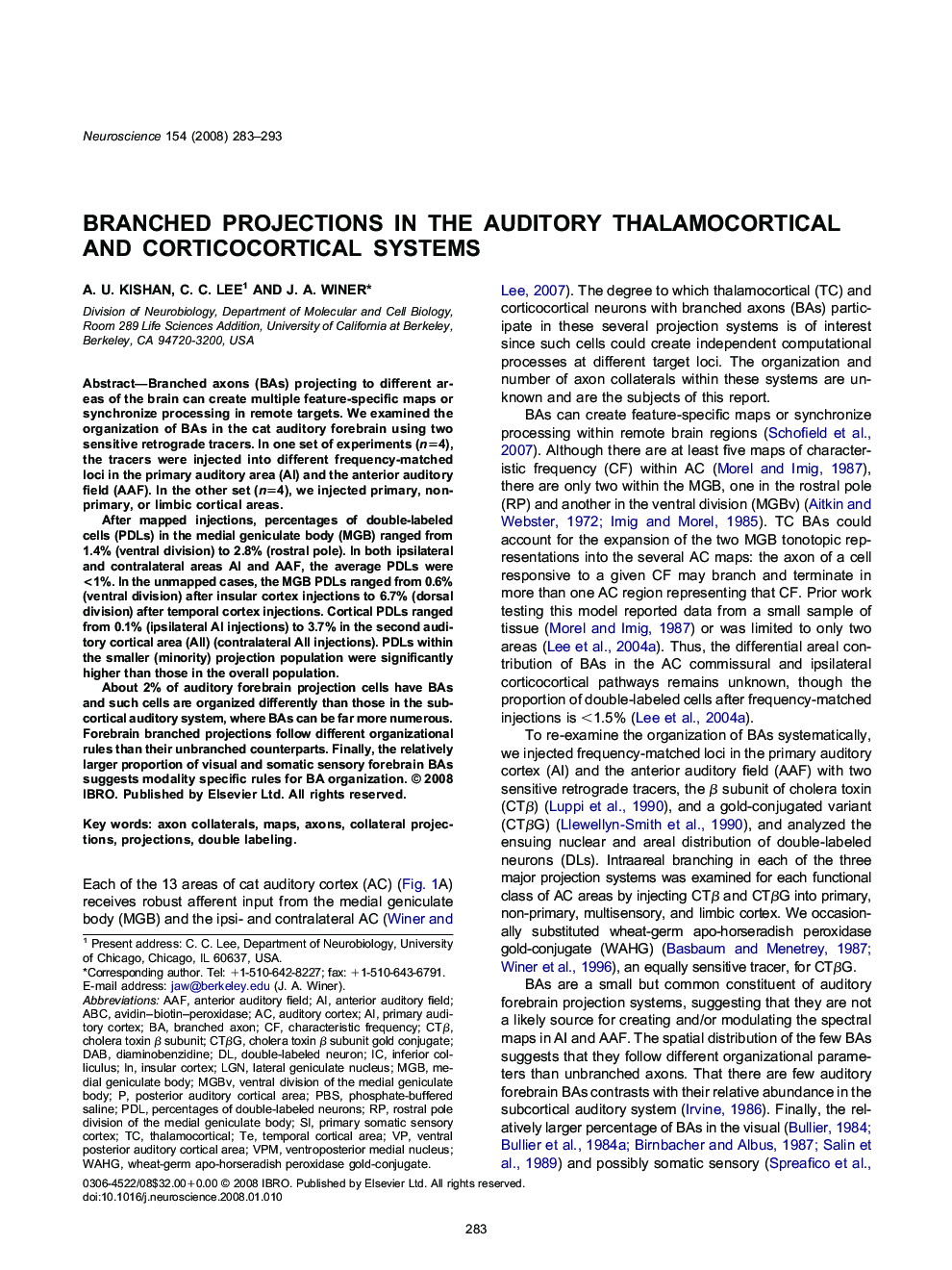| Article ID | Journal | Published Year | Pages | File Type |
|---|---|---|---|---|
| 4340556 | Neuroscience | 2008 | 11 Pages |
Branched axons (BAs) projecting to different areas of the brain can create multiple feature-specific maps or synchronize processing in remote targets. We examined the organization of BAs in the cat auditory forebrain using two sensitive retrograde tracers. In one set of experiments (n=4), the tracers were injected into different frequency-matched loci in the primary auditory area (AI) and the anterior auditory field (AAF). In the other set (n=4), we injected primary, non-primary, or limbic cortical areas.After mapped injections, percentages of double-labeled cells (PDLs) in the medial geniculate body (MGB) ranged from 1.4% (ventral division) to 2.8% (rostral pole). In both ipsilateral and contralateral areas AI and AAF, the average PDLs were <1%. In the unmapped cases, the MGB PDLs ranged from 0.6% (ventral division) after insular cortex injections to 6.7% (dorsal division) after temporal cortex injections. Cortical PDLs ranged from 0.1% (ipsilateral AI injections) to 3.7% in the second auditory cortical area (AII) (contralateral AII injections). PDLs within the smaller (minority) projection population were significantly higher than those in the overall population.About 2% of auditory forebrain projection cells have BAs and such cells are organized differently than those in the subcortical auditory system, where BAs can be far more numerous. Forebrain branched projections follow different organizational rules than their unbranched counterparts. Finally, the relatively larger proportion of visual and somatic sensory forebrain BAs suggests modality specific rules for BA organization.
